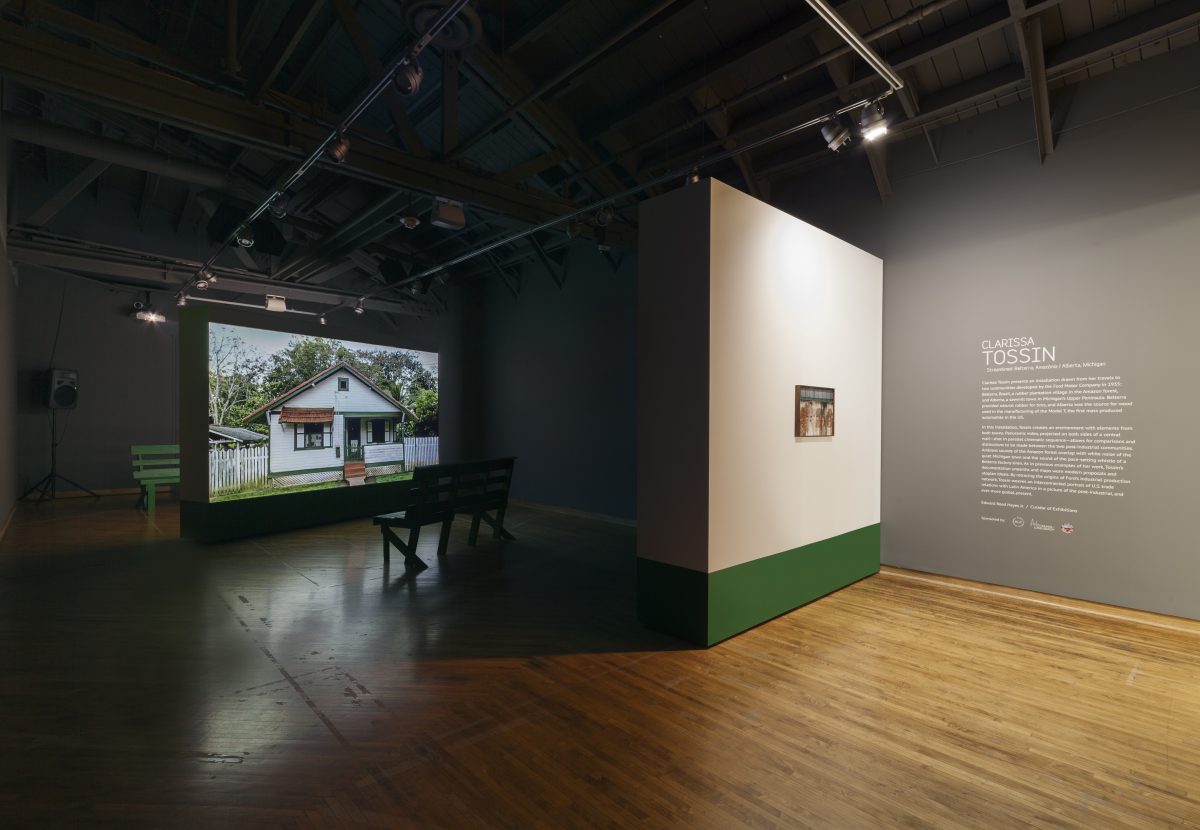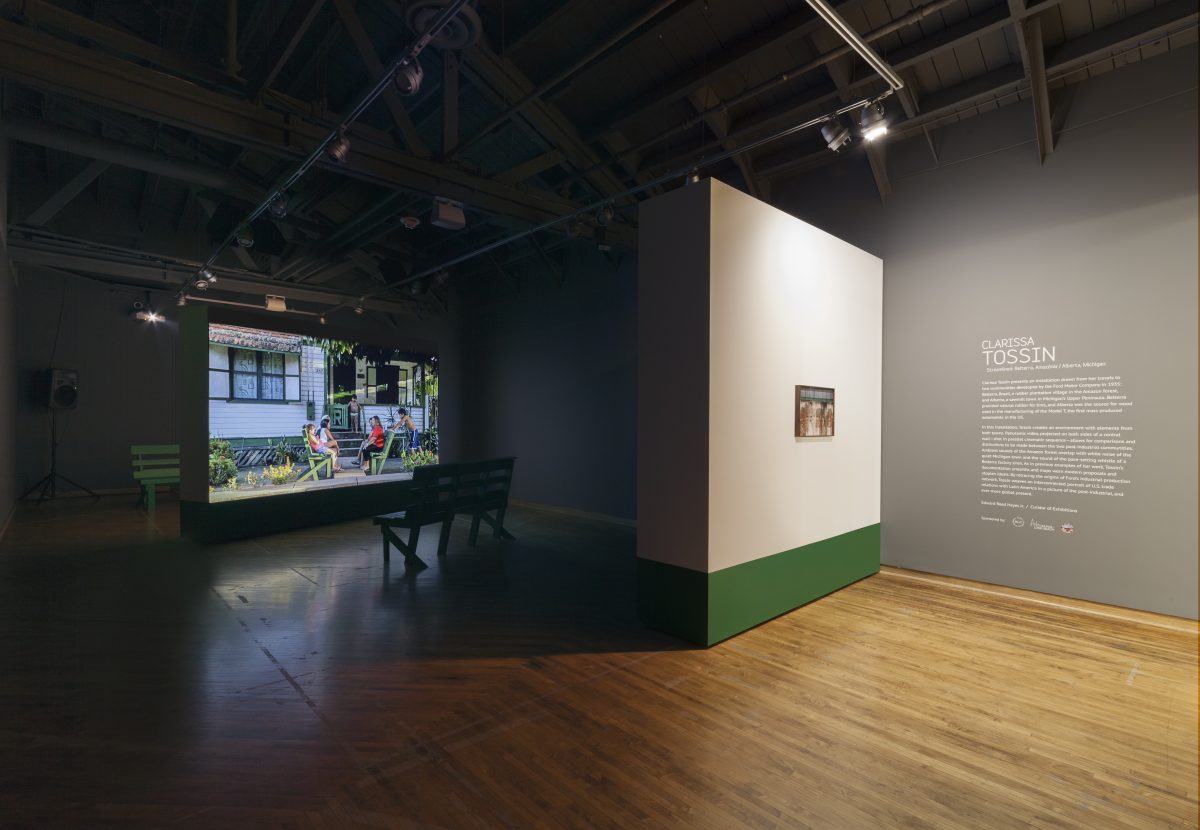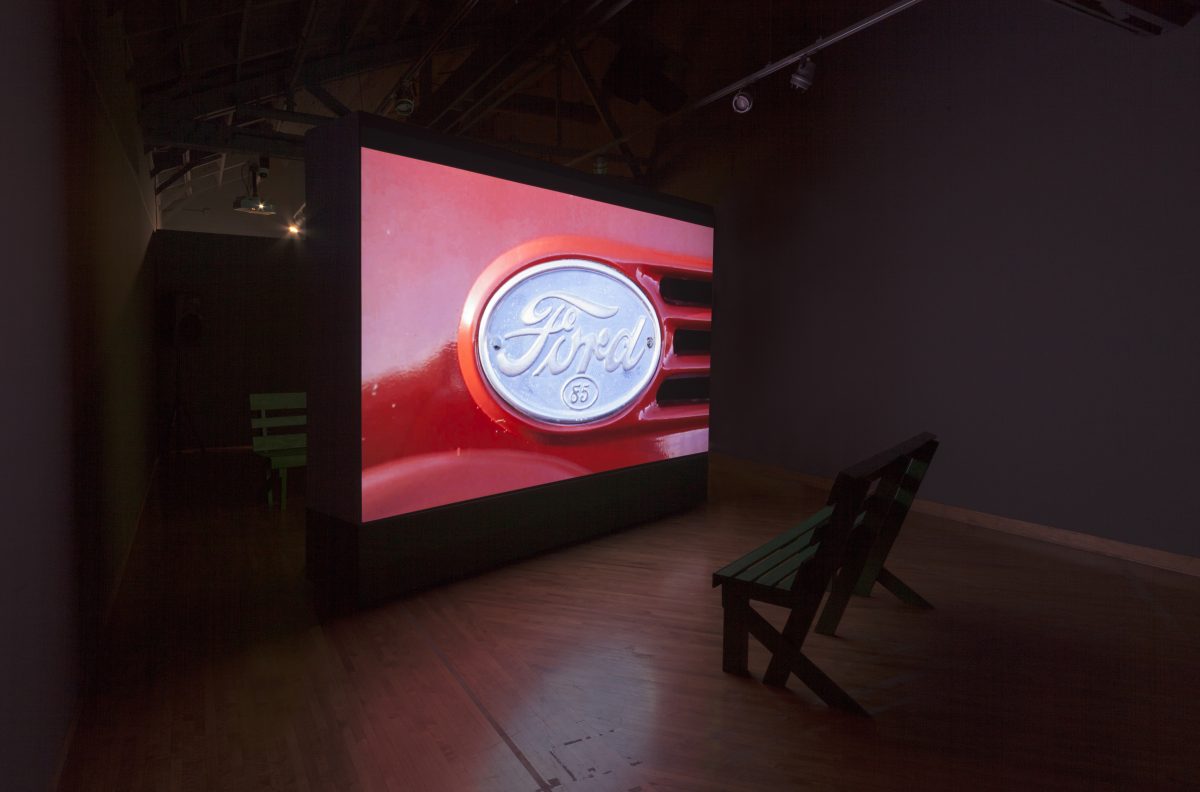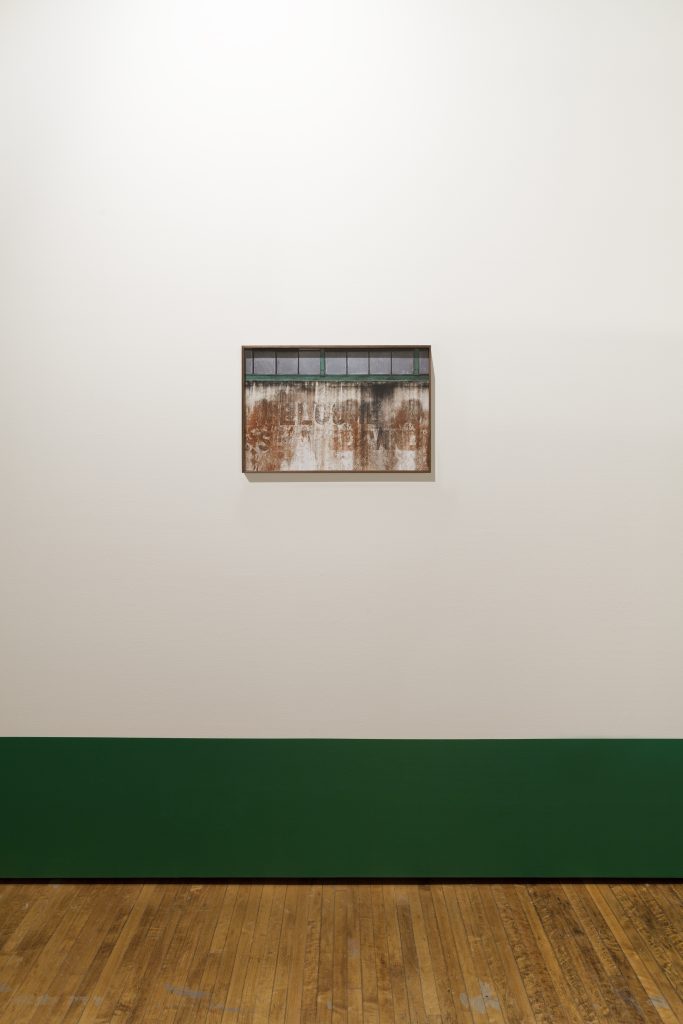
- This event has passed.
clarissa tossin: Streamlined: Belterra, Amazônia / Alberta, Michigan
Clarissa Tossin structures her installation Streamlined: Belterra, Amazônia/Alberta, Michigan around the two towns created by Henry Ford. Her artwork is not concerned with the detailed reconstitution of the history of each place, nor the didactic transmission of information about the economic and social dimensions of these projects. Instead, the work
follows her investigations regarding concrete manifestations of the idea of modernity in various contexts. This research includes the untimely ruin of some of those buildings—not only in physical terms, but also in relation to the promises and convictions they contained and represented, which were also abandoned. To this end, she brings together and compares
Belterra and Alberta many decades after they were disassociated from the international world of automobile production. She seeks out the similarities and differences between the two communities, specific locations that were inscribed within a movement that tied together such dissimilar global locations by means of a shared purpose and an entrepreneurial utopia. She uses images, she uses sounds, she uses empty and full spaces to create the sensation of a movement that existed and then exhausted itself within the very format in which it had been conceptualized. In seeking out and recording the traces of each place, she evokes a time which no longer exists, contributing to an archaeology of the modern—an archaeology that does not look for transparency in its findings, but recognizes and assumes that the subject of its investigation is opaque.
The installation’s central elements are two projections, one on each side of a wall placed in the middle of the exhibition space. On one side of the wall, moving images of Belterra are projected; on the other side, moving images of Alberta. Clarissa Tossin recorded both situations in our time, a time when Belterra and Alberta no longer operate according to the
logic of their original conception. Nevertheless, these places bear the marks of their shared past. The images on view cannot be seen simultaneously: one can only view the two projected films alternately. Therefore, comparison between them is mediated by the viewer’s memory of watching first one, and then the other, narrative. What they recollect reveals resemblances between the ways each town is presented. There is an immediate similarity between the highlighted subjects: the careful examination of the wooden dwellings—in wide shots and in telling details; the search for traces of the original functions of the places; the movement of people and cars in the few streets; the life being lived by their current inhabitants, seen at work and at play; and the relaxed meeting-places that are provided by the benches, set in front of nearly all the houses in Belterra.
Thus formalized, Clarissa Tossin’s installation seeks to excavate evidence of a form of work and life that remains from a past that was once modern, and that currently belongs only to the time of now. The artist acts as an “interpreter” of what remains of these two towns invented by Henry Ford—slowly transformed ever since their creation, discarding or incorporating things and meanings—to offer her own interpretation of those changes, through images, for public debate. Thus, her practice belongs to the order of the “forensic aesthetic” proposed by architect Eyal Weizman as “the mode of appearance of things in forums—the gestures, techniques, and technologies of demonstration; methods of theatricality, narrative, and dramatization; image enhancement and technologies of projection; the creation and demolition of reputation, credibility, and competence”.2 In the architecture of those places, Clarissa Tossin’s work seeks out traces of a way of life that no longer dominates the order of things, a way of life that nevertheless contributes to our understanding of where we have been and where we are now.
– Moacir dos Anjos





